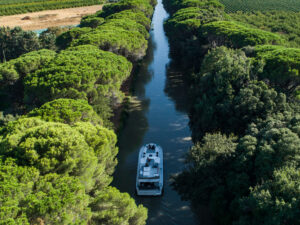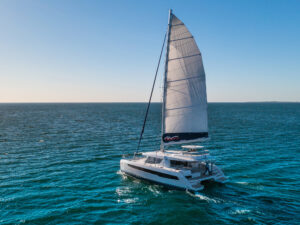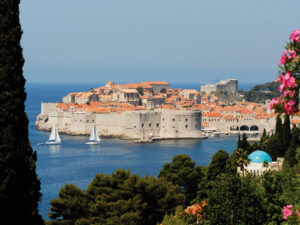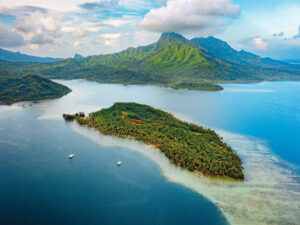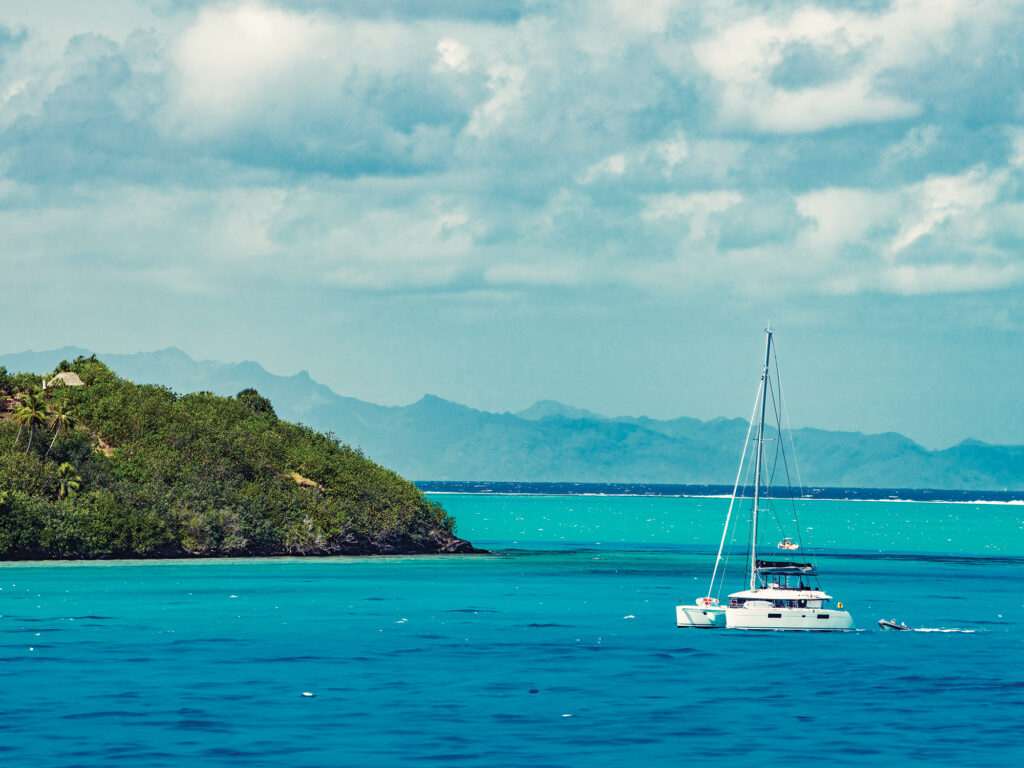
Apparently, we want it all—and bareboat charter companies are trying to give it all to us. If you haven’t checked out the bareboating scene in recent years, then you might find a fair bit of it unrecognizable. Yes, personal freedom and natural beauty are still part of the package with island and river cruising alike, but in many cases, everything from the booking process to the boats has undergone a serious upgrade.
Wet heads? A lot of today’s bareboaters won’t book boats that have them. No air conditioning? That’s a deal-breaker now too. Squeezing like sardines into itty-bitty berths? Forget about it. Life is too short.
“The boats are going more luxury,” says Lisa Mclean, marketing manager at Le Boat, who adds that especially since the pandemic, bareboaters are insisting on comfort. “It doesn’t have to be luxury, but people are more discerning—and people value spending money on experiences. They’re willing to spend a little bit more to have the boat customized the way they want it.”
That includes having enough room to move. Numerous companies are investing in fleets with bigger boats because bareboaters are demanding them. This is especially true of catamarans, says Tina Huewe, US senior marketing executive at Dream Yacht Charter.
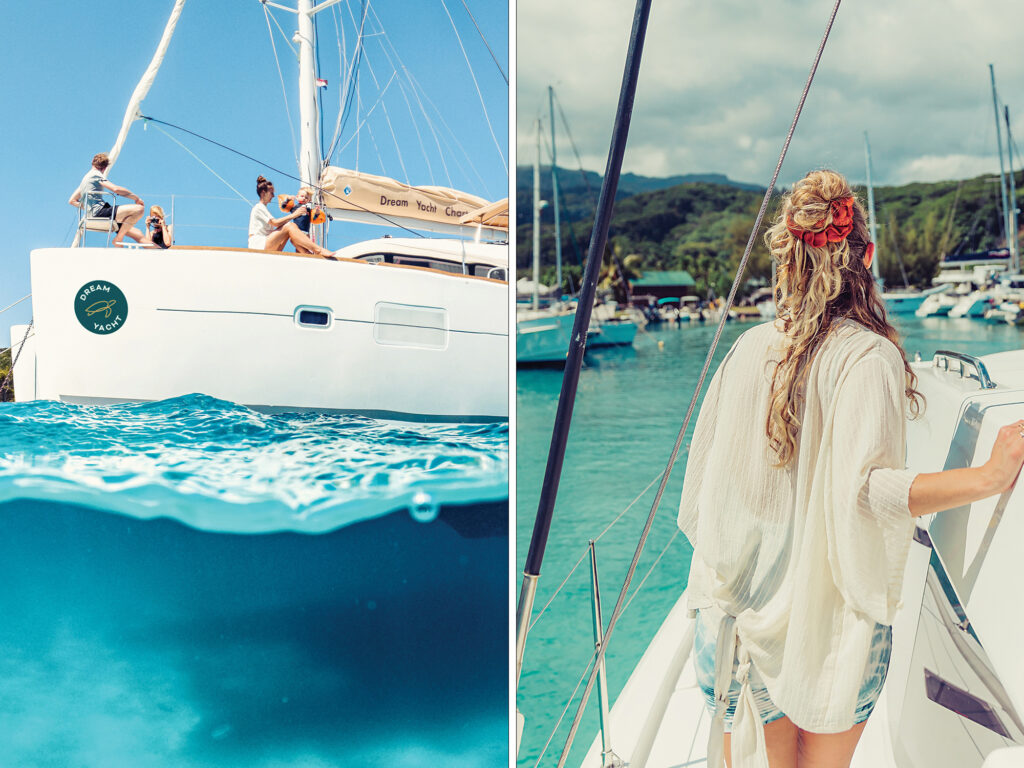
“Modern vessels are built with comfort and convenience in mind, featuring spacious cabins, fully equipped galleys and high-quality furnishings,” Huewe says. “Innovations like air conditioning, watermakers and improved refrigeration systems have become standard on many charter boats, ensuring a comfortable living environment regardless of the destination.”
Ian Pedersen, senior marketing manager for The Moorings in North America, says that his company is experiencing the same trend, with today’s bareboaters preferring large-volume catamarans to smaller-volume monohulls.
“The modern-day charter experience is very much about large catamarans,” Pedersen says. “Both sailing catamarans and power catamarans have become the norm in the charter space as guests crave space, comfort, and all the amenities of home.”
At Voyage Charters, broker Peter Jones says that he has noticed this significant change in bareboaters’ expectations in a relatively short time span. Even five years ago, Voyage Charters was booking boats with manual pump toilets and no air conditioning. Today, the new boat is the Voyage 590, which won Best Charter Boat in Cruising World’s 2022 Boat of the Year competition.
“That boat has six equal guest cabins with walkaround beds and en suites, plus crew quarters,” Jones says. “Everything’s electric and inverts off batteries from generators that start when they’re programmed to. It’s a massive change.”
From his vantage point on Tortola, Jones says, he sees all the boats that other companies are offering for charter. The entire market, he says, has “trended radically” toward bigger boats with more amenities, including a major shift into power catamarans.
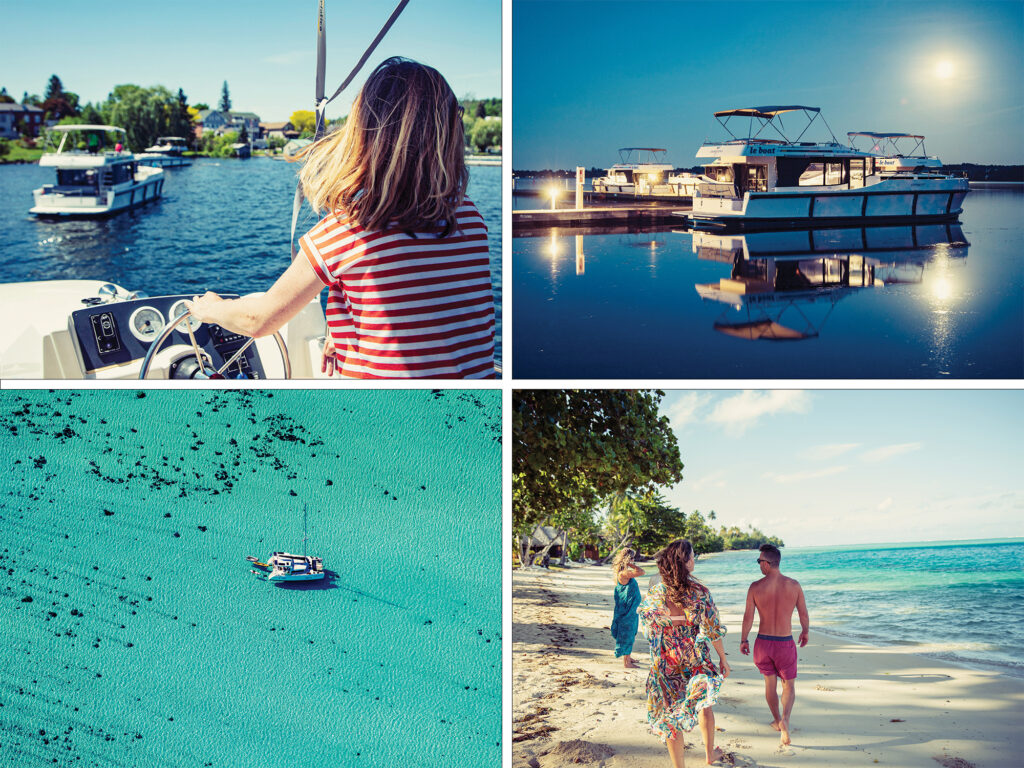
In some cases, transformations are happening ashore as well. The British Virgin Islands remains the top destination for The Moorings, Pedersen says, and the company recently completed extensive renovations to the marina property, hotel, on-site restaurants, gift shops and on-site supermarket.
“If you haven’t chartered with The Moorings in the BVI recently, we welcome you to join us again and see for yourself what a difference a few years can make,” Pedersen says.
In terms of new destinations, The Moorings recently announced its first one in years, in La Paz, Mexico. It’s expected to be up and running in time for the 2025 season.
To the north, Le Boat recently added a route along Canada’s Trent-Severn Waterway, based on the popularity of the Rideau Canal route. Bareboaters from the United States are choosing to drive to the boats instead of hopping on a plane—about 15 to 20 percent of them with their pets in tow, for an additional $180 cleaning fee, Mclean says.
“It doesn’t have to be luxury, but people are more discerning—andpeople value spending money on experiences.”
—Lisa Mclean, Le Boat
“We’ve seen big English sheepdogs, tons of golden retrievers, and of course, the purse puppies,” she says. “We’re also seeing a lot more multigenerational travel. Pre-COVID, our smaller boats were more popular. Now, it’s the four- and five-cabin boats. I think people are appreciating being on vacation with their families, or celebrating special occasions like a wedding anniversary or a 50th birthday that they didn’t get to celebrate during COVID.”
Le Boat is also seeing a sizable increase in inquiries for Holland and the United Kingdom, particularly along rivers such as the Thames. Mclean adds, “People are more appreciative of getting on the smaller waterways and getting out of the big cities.”
Huewe says that Dream Yacht Charter is seeing a similar trend with bareboaters in Europe. Demand is increasing for destinations that just a few years ago, many people didn’t even consider.
“While Croatia has long been a favorite for sailing enthusiasts, some of its lesser-known islands are now gaining popularity,” Huewe says. “Areas such as the Kornati archipelago, in easy reach from our base in Šibenik, and the Elaphiti Islands close to Dubrovnik offer tranquil waters, picturesque landscapes, and a growing number of modern marinas.”
Technology too has become a must-have while bareboating. Today’s cruisers are not willing to settle for access to Wi-Fi once a week at an internet cafe onshore. They want USB ports to charge their devices, and the ability to work or attend school from on board.
That profile fits at least 20 percent of Le Boat’s customers today, Mclean says. “People aren’t just traveling for vacation now. They’re working from wherever they are now. You’re on vacation, but you’re still checking email and calling in for a weekly Zoom meeting. Instead of doing it from your kitchen table, you’re doing it from the table on the boat.”
Demand has also increased for tech-focused booking processes, Pedersen says. The Moorings audience is more youthful than in decades past, with more clients in the 35- to 45-year-old range. They’d rather click on a screen than talk to a person.
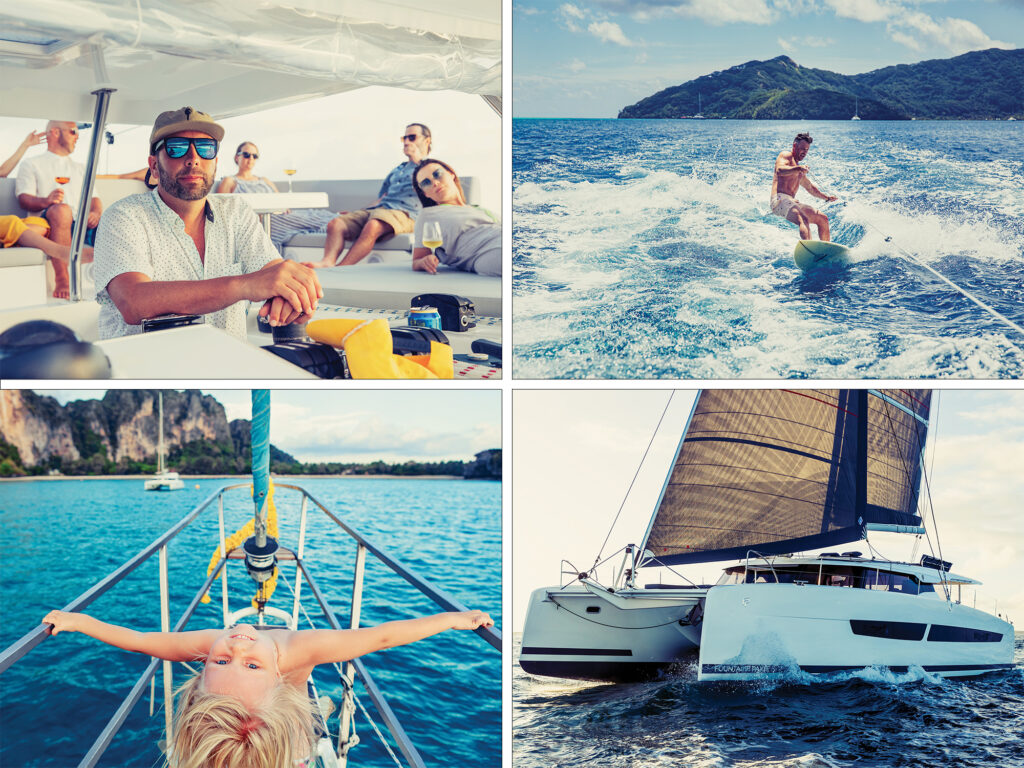
“As such, much of our planning processes have become mostly digital, allowing guests to complete almost the entirety of the pre-departure journey online before they arrive to pick up the boat,” he says.
Demand for modern tech also extends to the helm and engine room in some of today’s fleets. Bareboaters don’t just want to be online, Huewe says; they also want top-notch weather forecasting apps and eco-friendly propulsion systems.
“Modern catamarans and monohulls are now equipped with state-of-the-art navigation systems, including GPS chart plotters, AIS, and advanced autopilot systems,” Huewe says, adding that Dream Yacht Charter has partnered with Fountaine Pajot on electric-propulsion options. “The Aura 51 Smart Electric yachts have been part of the Dream Yacht fleet since spring of last year, and meanwhile have been joined by the electric Fountaine Pajot Elba 45 and various electric Dufour 530 Smart Electric models.”
Going forward, these companies say that bareboaters should expect even more creature comforts as new models join the fleets. Jones says that Voyage Charters has a 51 in the early stages of production and coming to charter next year with four en suite staterooms plus two cabins for crew. Le Boat also has plans in the works for a more luxurious option for bareboaters who want even more amenities.
“I think that as soon as one charter company is offering something to try to entice charter guests, it becomes an expectation,” Jones says. “It’s raising the bar for everyone a little bit. The result of that is that we’ve got these super-equipped charter boats with all the bells and whistles.”

